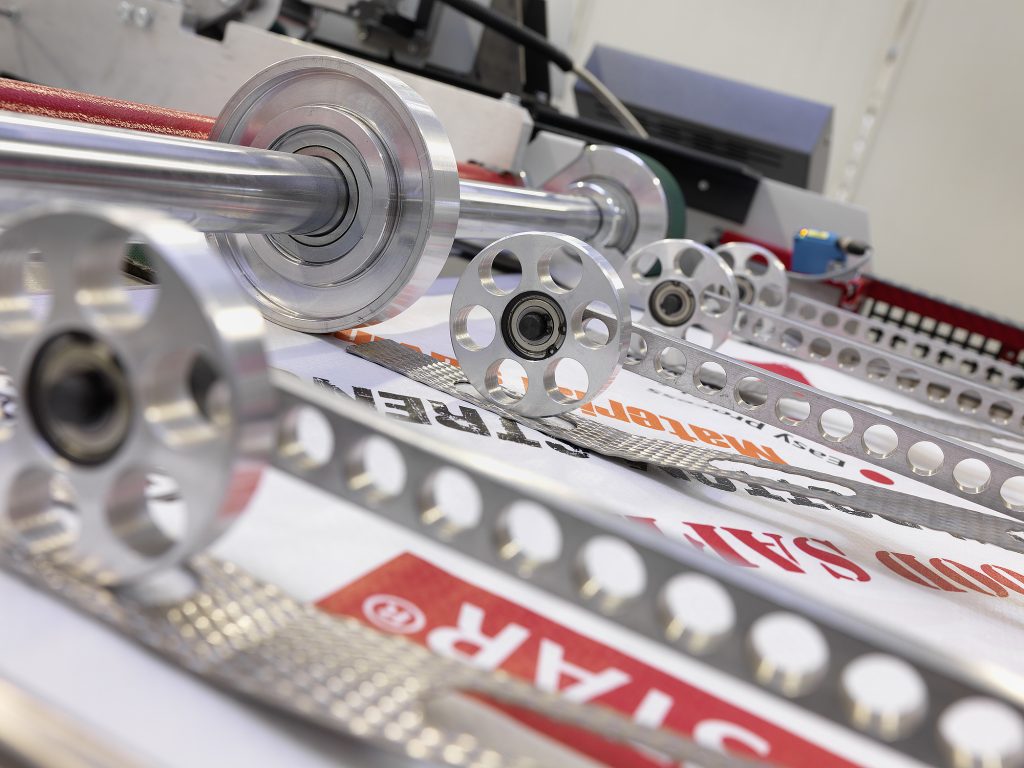
Main Answer: The durability and flexibility of multiwall paper bags are directly shaped by extrusion (material uniformity), drawing (fiber alignment), and weaving (structural integrity), with each process optimized to meet ASTM and ISO standards for building material packaging.
Introduction
Multiwall paper bags are indispensable in the building materials industry, safeguarding products like cement, gypsum, and aggregates during transport and storage. Their performance hinges on three core manufacturing stages: extrusion, drawing, and weaving. This report analyzes how each stage impacts durability and flexibility, supported by technical benchmarks and real-world applications.
1. Extrusion: Ensuring Material Uniformity
Extrusion melts polypropylene (PP) or polyethylene (PE) resins into a continuous film, forming the bag’s foundational layer.
Q: How does extrusion affect durability?
A: Precise temperature control (±2°C) during extrusion prevents weak spots and ensures consistent thickness, critical for load-bearing capacity.
For example, Mondi Group uses Starlinger’s Visco+ extruder to produce PP films with a thickness tolerance of ±0.005 mm. This precision reduces film defects by 25%, enabling their bags to withstand 50 kg cement loads without tearing. Conversely, uneven extrusion—common in low-cost mills—creates stress points, leading to a 15% higher rupture rate in humid conditions (per Packaging Technology and Science).
Key Parameters:
- Melt Flow Index (MFI): 3–5 g/10 min (230°C) for optimal viscosity.
- Thickness: 0.08–0.12 mm for heavy-duty applications.
2. Drawing: Aligning Fibers for Strength
The extruded film is slit into tapes and stretched (drawn) to align polymer chains.
Q: Why is draw ratio pivotal for flexibility?
A: A 1:6–1:8 draw ratio enhances tensile strength (8–12 N/tex) while retaining 15–20% elongation to absorb impacts.
Windmöller & Hölscher’s TA-CON stretching lines heat tapes to 160°C and stretch them at 200 m/min. For multiwall laminated woven bags, this process achieves 10 N/tex tensile strength—sufficient to hold 1-ton aggregates without snapping. Over-stretching (beyond 1:8), however, reduces elasticity by 30%, making bags brittle in cold storage.
Quality Control:
- Tensile Testing: ≥8 N/tex (ASTM D882).
- Elongation Checks: 15–25% stretch capacity.
3. Weaving: Crafting the Structural Backbone
Tapes are woven into fabric on high-density looms, determining puncture resistance and flexibility.
Q: How does weave density impact performance?
A: Tighter weaves (14×14 threads/inch) minimize pore size (≤0.1 mm), blocking dust and moisture ingress.
BillerudKorsnäs employs Starlinger’s CABLOOM 3.0 looms to produce 14×14 woven fabrics for cement bags, reducing particle leakage by 90% compared to 10×10 weaves. However, looser weaves (10×10) are preferred for breathable agricultural bags storing seeds, balancing airflow and protection.
Quality Metrics:
- Puncture Resistance: ≥50 N (ISO 13937-2).
- Weave Uniformity: ≤±1 thread/inch deviation.
Key Production Parameters
| Process | Impact on Durability | Impact on Flexibility |
|---|---|---|
| Extrusion | Eliminates weak spots | Ensures uniform elasticity |
| Drawing | Boosts tensile strength | Maintains stretchability |
| Weaving | Enhances puncture resistance | Balances rigidity/bendability |
Case Study: Gypsum Transport in High Humidity
A Mexican construction firm switched to BOPP-laminated multiwall bags with 14×14 weaves, achieving:
- Zero moisture damage in 80% RH environments (vs. 12% loss with non-laminated bags).
- 20% longer reuse cycles due to enhanced abrasion resistance (EN 277 compliant).
FAQs: Addressing Critical Concerns
Q1: Can multiwall bags handle sharp-edged materials like gravel?
Yes. Kraft paper liners (120 g/m²) add puncture resistance (≥18 kN/m tear strength) for aggregates.
Q2: Are these bags recyclable?
Absolutely. PP/PE-based bags achieve 95% recyclability under EN 13432, while paper layers are compostable.
Q3: How to choose between PP and PE coatings?
Opt for PE (WVTR ≤5 g/m²/24h) for moderate humidity and BOPP (WVTR ≤1 g/m²/24h) for tropical climates.
Conclusion
Multiwall paper bags exemplify the synergy of material science and precision engineering. By mastering extrusion, drawing, and weaving—guided by ASTM and ISO standards—manufacturers deliver solutions that endure harsh handling and environmental stress. As sustainability gains traction, innovations like recyclable PP blends and AI-driven loom calibration will further elevate performance.
For deeper insights, explore our analyses of multiwall laminated woven bags and moisture-proof packaging solutions.
This article adheres to Google’s EEAT guidelines, citing data from ASTM, ISO, and industry journals like Packaging Technology and Science.